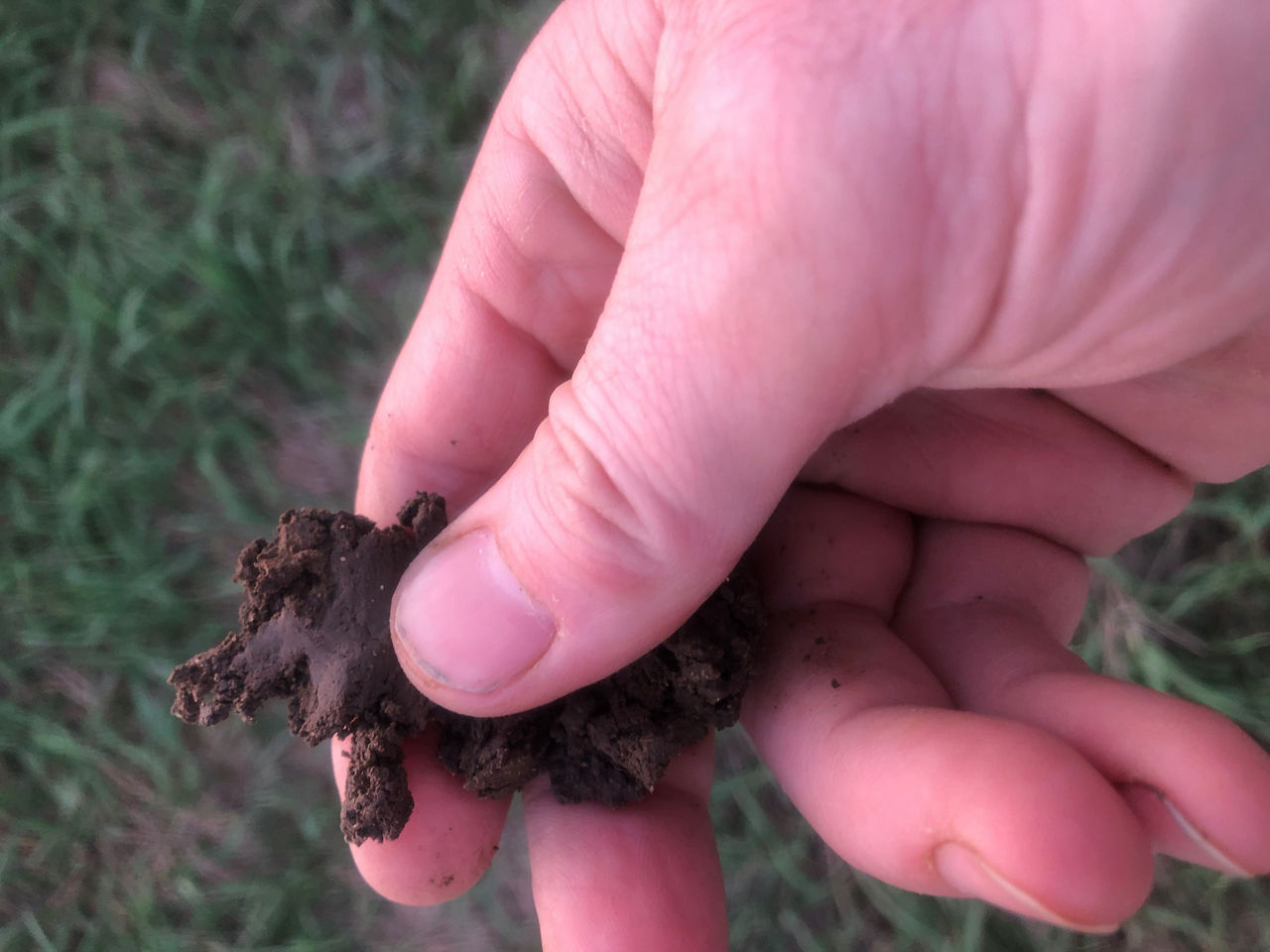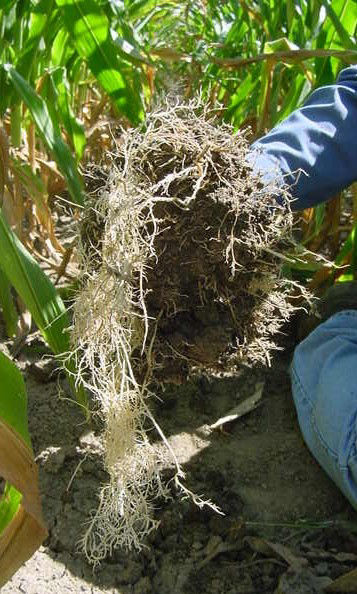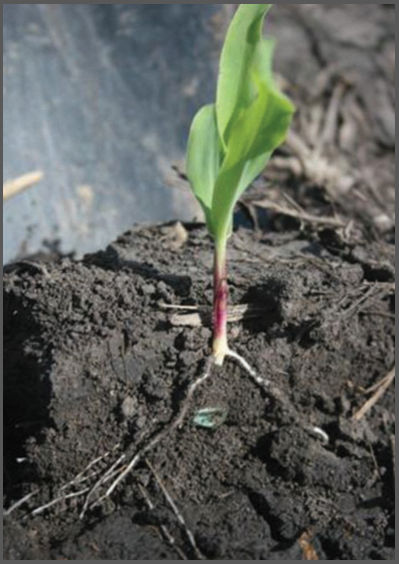5 MIN READ
Effects of Sidewall Compaction on Corn Seedlings
March 21, 2021
Introduction
Corn has a fibrous root system. Restrictions below ground affect early growth of nodal roots and lead to stunting of corn seedlings. Root restrictions can have a lasting effect on the ability of plants to reach full yield potential. Have patience as the spring season warms up and allows soils to become fit for planting. When planting operations begin, proper planter adjustment can help prevent sidewall compaction.
Causes of Sidewall Compaction
Sidewall compaction refers to the soil compaction and soil smearing in and around the seed furrow. It can occur when planting operations take place on wet soils.1 Seed furrow openers actually smear the soil on the sides of the seed furrow. Soil does not collapse around the seed, and side walls are effectively sealed, creating a barrier to seedling root growth. When the seed slot is properly closed, the sidewalls should be fractured around the seed, providing good seed-to-soil contact. Press wheels set with too much down-pressure to close the seed slot tend to over-pack the soil. If the seed placement is too shallow relative to the press wheel positioning, this packing occurs below the seed, causing difficulty for downward root penetration.
Identifying Fit Soil Conditions
Soils are generally considered fit for field operations when soil from a 3- to 4-inch depth can be formed into a ball that fractures easily when dropped or will not form a ball at all. Another technique is to press soil between your thumb and fingers to form a soil ribbon (Figure 1). Fit soil will crumble and will not form a ribbon of any significant length.2

Figure 1. Test soil moisture by squeezing a ribbon of soil between your fingers. Fields are too wet when a ribbon of soil reaches a length of 3 inches or more before breaking.2
Sidewall Compaction During Planting and Early Season
Sidewall compaction can cause poor seed-to-soil contact. Often, shallow placement of the seed is associated with sidewall compaction. Evaluate the trench as planting gets underway. Dig across seed furrows to look for unbroken, ‘V’-shaped, or shiny walls created by the opener. These smooth shiny soil surfaces can become hard when soils dry and do not allow root penetration. Although unreliable, soaking rains remedy sidewall compaction as they can soften sidewalls enough to allow some root penetration shortly after planting.
Consequences of sidewall compaction can include: reduced germination and poor stands, uneven emergence and growth, restricted root growth, and stunted seedlings. Seed furrows may not completely close when sidewall compaction occurs (Figure 2). If dry conditions develop after planting, germinating seedlings may have inadequate amounts of moisture.

Sidewall Compaction During the Growing Season
Plants with restricted root growth often show symptoms of nutrient deficiencies. This even occurs in soils with adequate soil test values, as the roots are not able to intercept enough nutrients. By the V3 growth stage, nutrient deficiencies can become more pronounced as kernel reserves are depleted and the plant begins to rely on its nodal root system.
Corn may exhibit floppy corn syndrome after a wind event before the V5 to V6 growth stage.3 Sidewall compaction and shallow planting create a shallow root system that is unable to grow deep and wide enough to anchor plants (Figure 3). Examine root development to see if initial nodal roots died or became shriveled and discolored before they penetrated furrow sidewalls (Figure 4).4 These symptoms are unrelated to insect or pesticide injury causing lodged corn.

Figure 3. Resulting corn root system due to sidewall compaction. Roots are flattened in a ‘tomahawk’ pattern following the seed trench.

Figure 4. Early-season corn stunting is often related to below-ground root issues. Take a spade and check soil strength and nodal root development. Soil strength increases in drying furrows, and nodes may die if they cannot penetrate moist soils before drying up.5
Machinery Settings for Reducing Sidewall Compaction6
Reduce down-pressure on the gauge wheels and closing wheels
Resist the urge to increase down-pressure to close the seed furrow
Leave residue over the row to reduce drying and soil shrinking in the seed furrow
Level the planter, or operate slightly tail-down to improve seed to soil contact, and seed furrow closing
Consider a tilling attachment for loosening soil for closing the seed furrow
Consider a spoked closing wheel to fracture the sidewall
Consider one spoked and one standard closing wheel on each row unit
Stagger the closing wheels (spoked in the lead)
Aggressive spiked closing wheels (with long straight tines) may dry out soil - seed firmers and a drag chain can be added to level the soil
Summary
Monitor conditions to avoid planting fields ‘on the wet side’. Sidewall compaction restricts root growth and is not correctable during the growing season. Attention to corn planter settings helps provide a best-case scenario for seed placement. Check early-season root establishment if above-ground growth is stunted or appears nutrient deficient.
Sources
1 Staton, M. 2019. Preventing sidewall compaction in field crops. Michigan State University. https://www.canr.msu.edu/news/preventing_sidewall_compaction_in_field_crops.
2 Staton, M. 2016. Preventing sidewall compaction in field crops. Michigan Farm News. https://www.michiganfarmnews.com/preventing-sidewall-compaction-in-field-crops.
3 Nielsen, R.L. 2019. “Rootless” or “Floppy” corn syndrome. Purdue University. Corny News Network. https://www.agry.purdue.edu/ext/corn/news/timeless/FloppyCorn.html.
4 Nielsen, R.L. 2020. Root development in young corn. Purdue University. Corny News Network. https://www.agry.purdue.edu/ext/corn/news/timeless/Roots.html.
5 Ministry of Agriculture, Food, and Rural Affairs. Compaction – Soil Diagnostics. Ontario Crop IPM. http://www.omafra.gov.on.ca/IPM/english/soil-diagnostics/compaction.html.
6 Jasa, P. 2019. Avoiding sidewall compaction at planting. University of Nebraska – Lincoln. https://cropwatch.unl.edu/2019/avoiding-sidewall-compaction-planting.
Web sources verified 3/8/21.
4007_S2
Seed Brands & Traits
Crop Protection
Disclaimer
Always read and follow pesticide label directions, insect resistance management requirements (where applicable), and grain marketing and all other stewardship practices.
©2024 Bayer Group. All rights reserved.